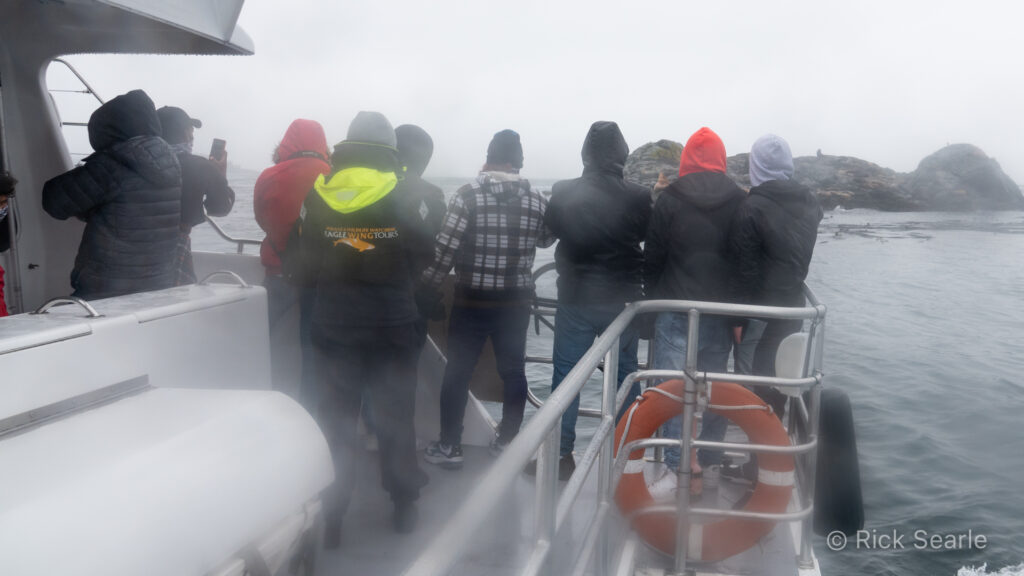
I have a busy life. And, for the most part, I like it that way, especially given that everything I’m doing perfectly aligns with my passions.
Being the part-time coordinator of the Greater Victoria NatureHood keeps me hopping. It is a remarkable collaboration among 16 organizations ( two businesses, four municipal departments and ten not-for-profits) sharing the mission of instilling and deepening the connection with nature through what can be found nearby in one’s backyard, neighbourhood and region.
The Greater Victoria NatureHood initiative is made possible by funding provided by Environment and Climate Change Canada through the Canadian Wildlife Service and is administered by Nature Canada.
Over the past few years, we used some of our allotted funding to offer free cruises through the Victoria Harbour Migratory Bird Sanctuary and by the Esquimalt Lagoon Migratory Bird Sanctuary for children, youth and families, made possible by the generosity of Eagle Wing Tours, one of the current partners.
Last year, we reached out to the Inter-Cultural Association of Greater Victoria and invited them to send the 25 youth enrolled in their youth program on an all-expense, 2 hour cruise to experience and learn about the ocean surrounding much of the region with the assurance that the current COVID protocols would be followed,
The cruise was part of the All Bufflehead Day celebration which happens every year on or near Oct. 15th. There’s a fascinating story here, but it will have to wait till a later post.

The program manager was over the moon with excitement. Her organization could not afford such an amazing experience. Many of the youth, she said, had never been on a boat, other than maybe a BC Ferry.
So you can well imagine the excitement among the youth when they walked down the wharf and gathered around one of Eagle Wing’s excellent naturalists. Even though some were more busy trying to look and act cool, most listened intently to what she had to say.
Once on board and on the way, most of them braved the cold and rainy weather to spend much of their time on the decks, watching for wildlife. No more than maybe a half an hour on the water, we encountered the first of not two, three, or four humpback whales. Two of which swam under our vessel. They surfaced and gave out a mighty blow. Now these young people know what a whale’s breath smells like.
They also saw, heard, and smelled the sea lions hauled out at Race Rocks, and they witnessed a large female surface only a few metres from the boat with an octopus in its mouth which it then proceeded to tear apart and eat.

You may be able to imagine the excited squeals, shrieks, shouts and laughter that prevailed on the vessel after the first sighting and throughout the rest of the cruise.
According to one of the ICA staff on the cruise, one of the students told him: “I feel like we are like a family. Being on the trip and seeing friends again to see these ocean animals is really refreshing for my spirit. It’s really calming and healing for those of us stuck at home.”
In a blog post for the association’s website, he wrote:
“Getting to share these experiences with our youth is an incredible opportunity to learn, for staff and youth alike. Our group enjoyed teaching one another words and phrases in our home languages to help point out interesting sights along the way – with “Look over there!” and “Whale, whale, whale!” in Arabic being particularly useful to our group. Getting to appreciate something bigger than yourself is a great way to put things in perspective, particularly during these tumultuous times. For our youth, it was a welcome chance to celebrate their ICA community and learn about their marine neighbours.”
Knowing that I played an important role in making this experience possible for these youth fills my heart and energizes my spirit. It keeps me going, wanting to do more with the Greater Victoria NatureHood to connect people with the nature found nearby as well as with nature more generally. The more we can touch people the way we did on this cruise, the more we can foster the development of a public ready to protect and restore nature.







